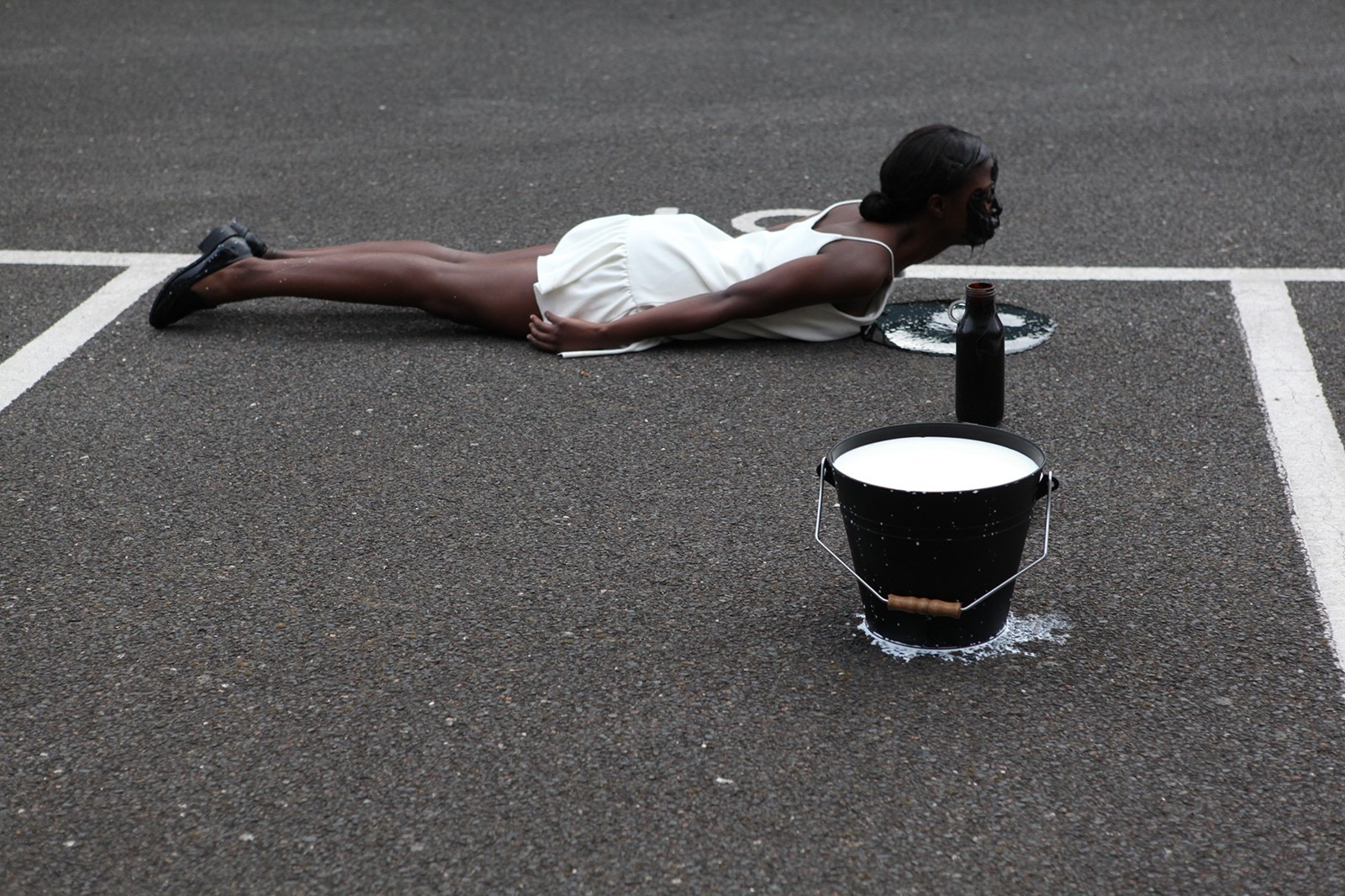When thinking of Tiffany & Co., the 1837-founded fine jewellery company synonymous with timeless luxury, the image of a screaming woman tipping a full bucket of water over her head in the middle of a gallery space might not be the first thing to come to mind. But last night, as part of a new exhibition showcasing the work of seven emerging London-based artists selected to receive the Tiffany x Outset Contemporary Art Fund Prize, this was exactly one of the performative pieces on display.
In fact, Tiffany’s relationship to the world of conceptual art is both symbiotic and longstanding. As Richard Moore, vice president and creative director of the company’s store design and creative visual merchandising – and one of the five influencers comprising the prize’s judging panel – explains: “It started with our founder Charles Lewis Tiffany 180 years ago. He was a big supporter of the arts, one of the original trustees at The Met in New York, and really believed in many creative endeavours. His son, Louis Comfort Tiffany, was an artist himself, specialising in glasswork and painting. Then there was Gene Moore, who created the window displays from 1955 to 1984, and he collaborated with many artists, including Andy Warhol and Robert Rauschenberg. So art is something that has been a part of our DNA, our brand legacy and history. That’s why this project feels so right – it is totally within the realms of who we are as a brand.”
2017 is the prize’s inaugural year, and it arrives at a particularly pertinent moment. For young graduates situated in cities such as London or New York, the rising cost of living makes maintaining a practice outside the walls of art school increasingly difficult. “There is a disconnection in the amazing level of creativity and integrity of art, along with the incredible art schools in cities such as London,” says Moore. “That disconnect is something that Tiffany felt quite passionate about.” In teaming up with Outset, the only international, independent charity garnering patron support for emerging artists, the company has extended its philanthropic hand to thousands of these talented individuals.
The panel, including fêted multi-media artist Eddie Peake, ultimately chose the seven who they felt would particularly benefit from receiving rent-free studio spaces. “We went through so many submissions. It was a question of ‘what will this artist do without a free studio space for the year? Where will they go, and what will that path look like?’ We had to think about how they would feed off each other and collaborate as a result of inhabiting the spaces in Tottenham together – sort of like a community. It had to be potentially life-changing for the artists.” Here, we introduce the prizewinners, each recent graduates of London’s most prestigious art institutions, and each a one to watch.
1. Jade Blackstock, Royal College of Art, MA Performance (above)
Performance artist Jade Blackstock is behind the aforementioned work comprising of her own scream, a bucket of water and a bulging sack suspended in the centre of the gallery space. “In my practice, themes of race, femininity, loss and resistance tie together with explorations of spectacle, constructed identity and social commentary. I tend to make very material-based performances, to produce visual and fragmented narratives which combine the conceptual, historical and physical qualities of materials with the physicality and limitations of my body,” she says.
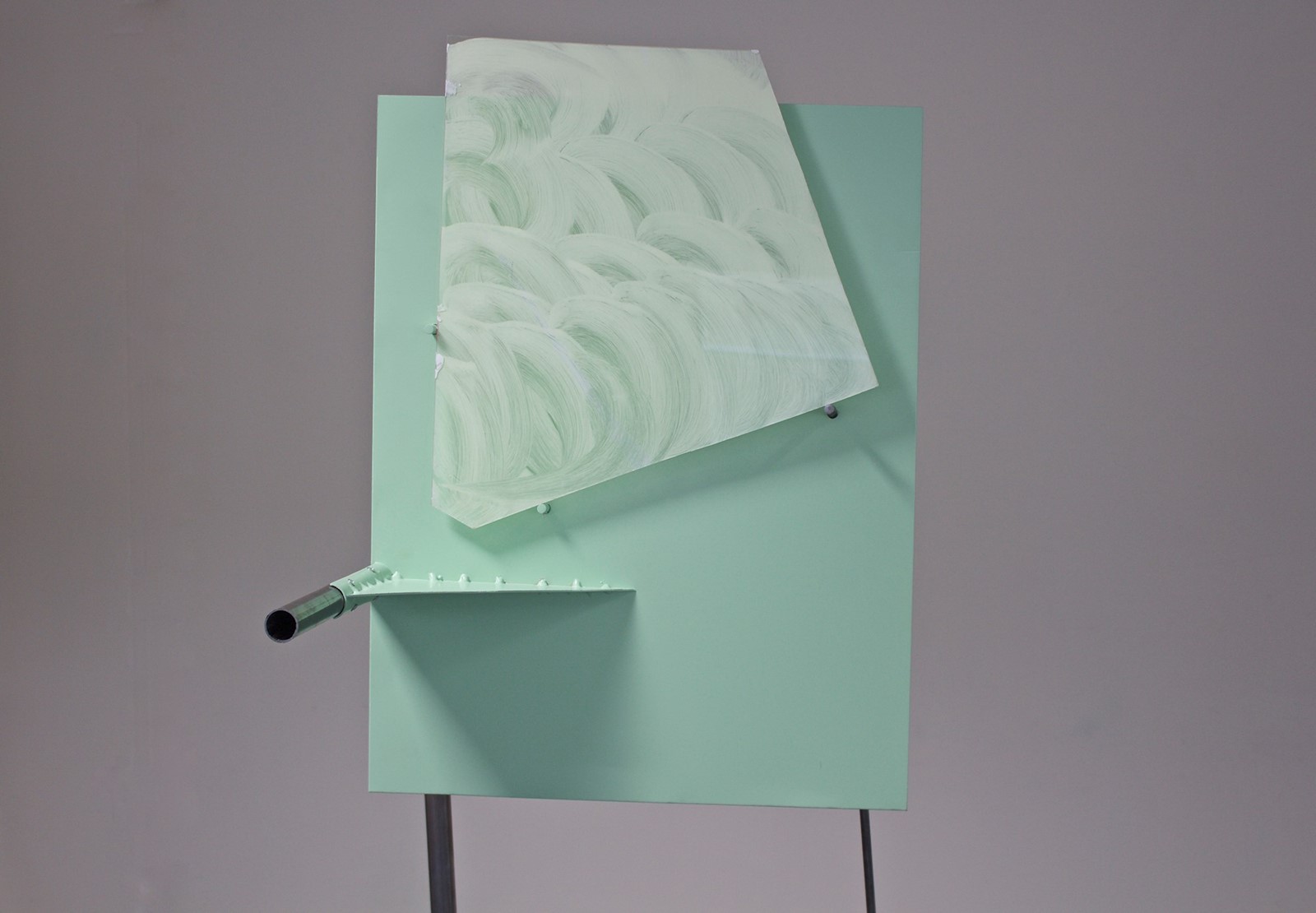
2. Daniel Curtis, Wimbledon College of Art MFA
Sculptor Daniel Curtis is also a comedian and a writer, and he is currently producing a book with his wife and creative partner. An alumnus of Wimbledon College of art, his work is driven by form. “I fabricate and compose shapes, colours and surfaces until there is a charged relationship between them,” he says. “Like characters in a play, I form structures to be in active conversation with one another, their dialogue held in a frozen tableau.” One of his pieces, made of powder coated steel, raw steel, copper, emulsion, spray paint and wood, also showcases Curtis’ way with words; it is titled: People standing around at an after work party. People that you think you recognise, seeming familiar, but that you can’t quite put your finger on, making you wonder if you know them at all.

3. Simona Sharafudinov, Central Saint Martins, MA Photography
Beside the ephemera of Blackstock’s performance lay a body sheathed in pink latex, its head concealed within the illuminated maquette of a house. The body belonged to artist Simona Sharafudinov, whose work Haus of Perestroika asks the viewer to reimagine the cities of tomorrow by confronting their fear of homelessness. This work was first performed in 2016 for 30 hours over a period of five days at an exhibition in Hackney, London. “My interest lies in questioning the process of image-making in relation to exiled identity and idealised systems of value,” says Sharafudinov.
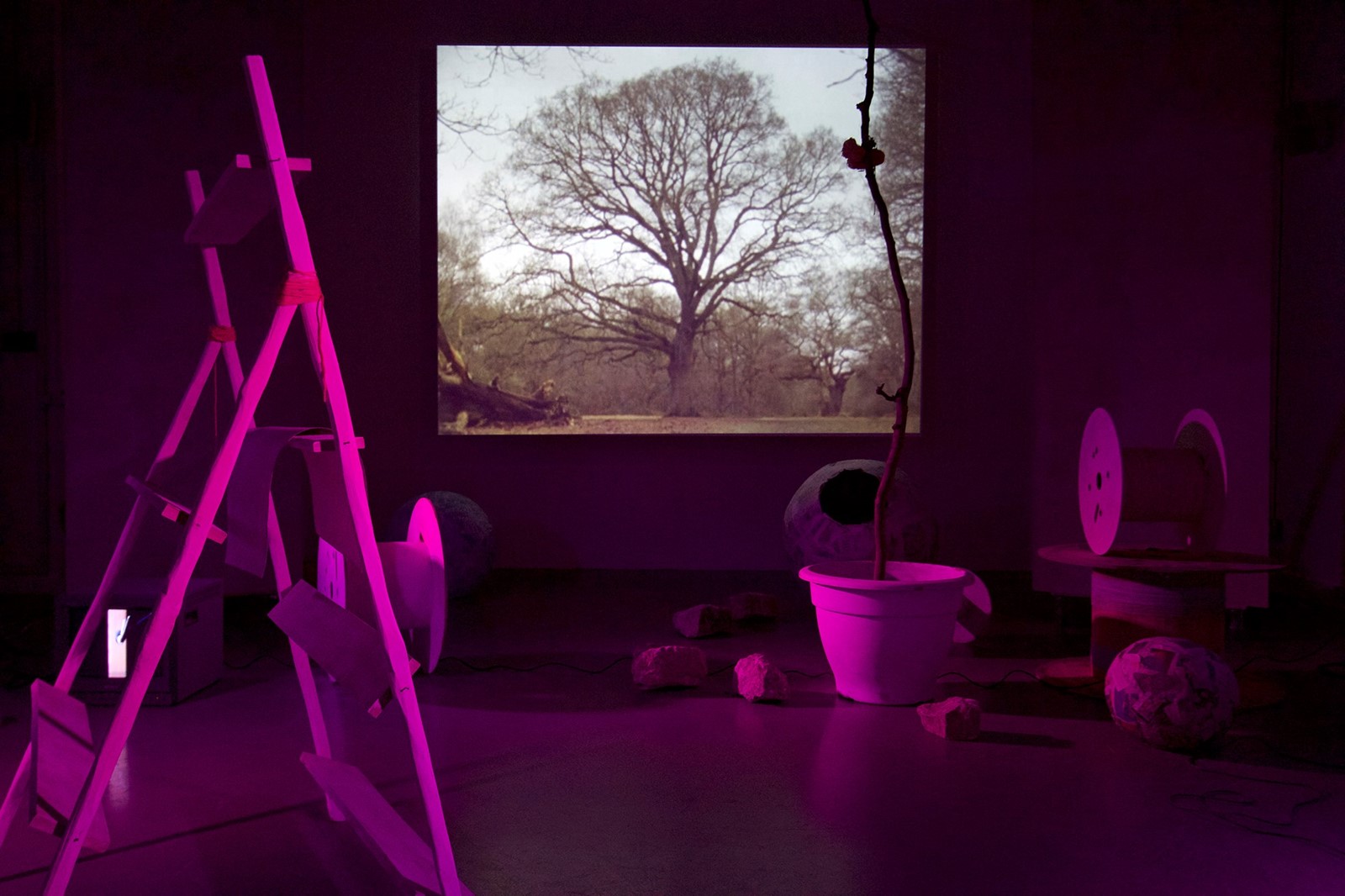
4. Natalie Kynigopoulou, The Slade, MA Fine Art Media
Natalie Kynigopoulou, a graduate of The Slade, showed an installation piece that incorporated sculpture, video and sound. An oversized spool of pink cotton lay beside a potato on a plinth, a planted tree and a small garden shed. Projected on the back wall was a video of various natural phenomena. “I work between photography, objects, more recently early animation and 16mm film,” the artist says of her practice. “Sound has recently also become particularly important.”
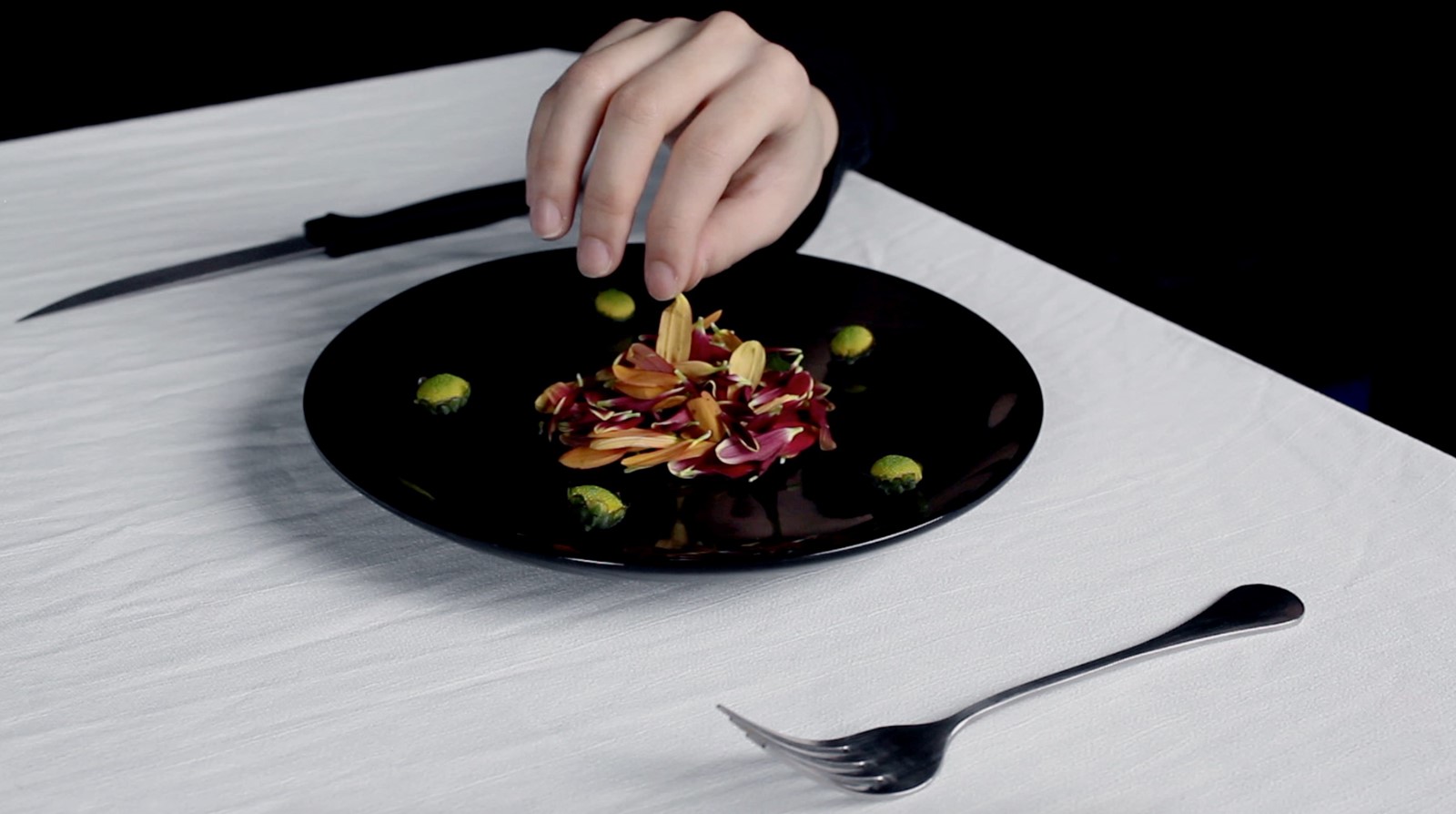
5. Jiaqing Mo, Chelsea College of Art, MA Fine Art
Jiaqing Mo’s work incorporates video, installation and performance, exploring communication between humans and animals, and the relationship between humans and nature. “My art centres upon the construction of ideas, covering video, theatre, performance and installation,” she says. “My themes are always about relationships, time, endless instability... But each piece has a specific theme via the different objects and atmospheres I have created.”
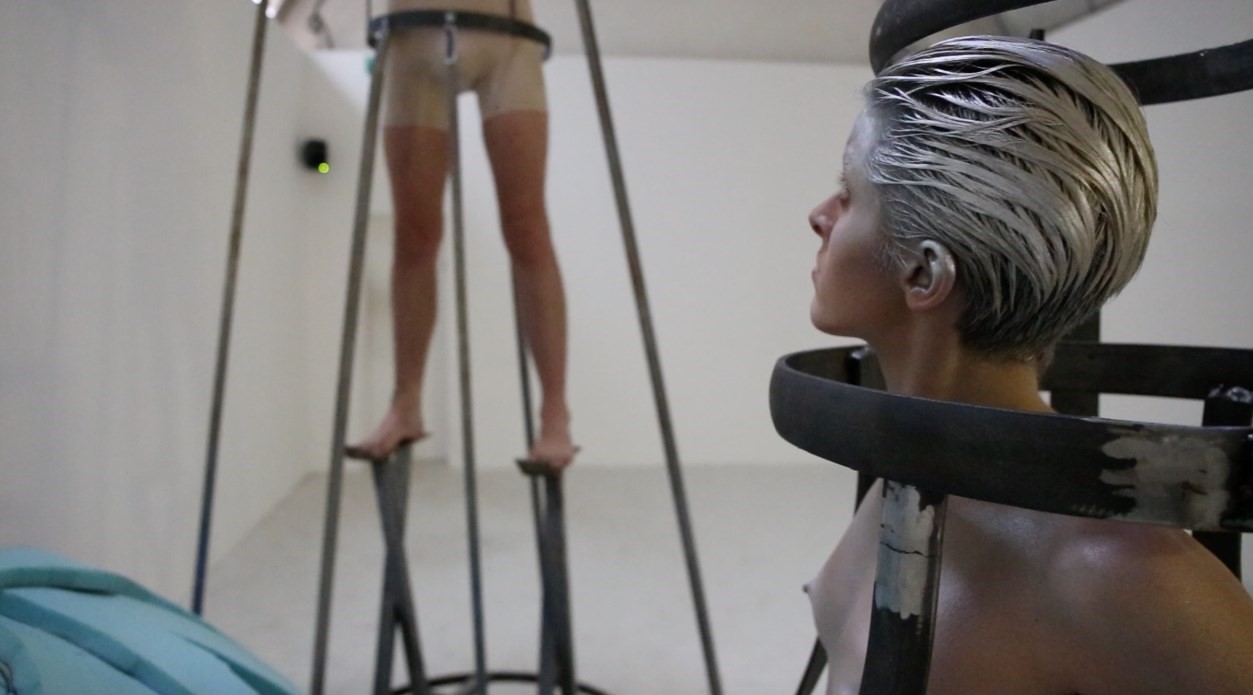
6. Fani Parali, Royal Academy of Arts, Post Graduate in Fine Art
Opening the show was Greek-born Fani Parali, who presented a performance piece. The work, titled The Wingspan Measurers 3, took the form of a Da Vinci-esque contraption occupied by a drag performer, miming to an operatic soundtrack. “I have been living London for the past seven years,” says Parali. “I have worked in the theatre as a scenic artist for more than 15 years, making props and painting backdrops, which puts my practice into a particularly performative context.”
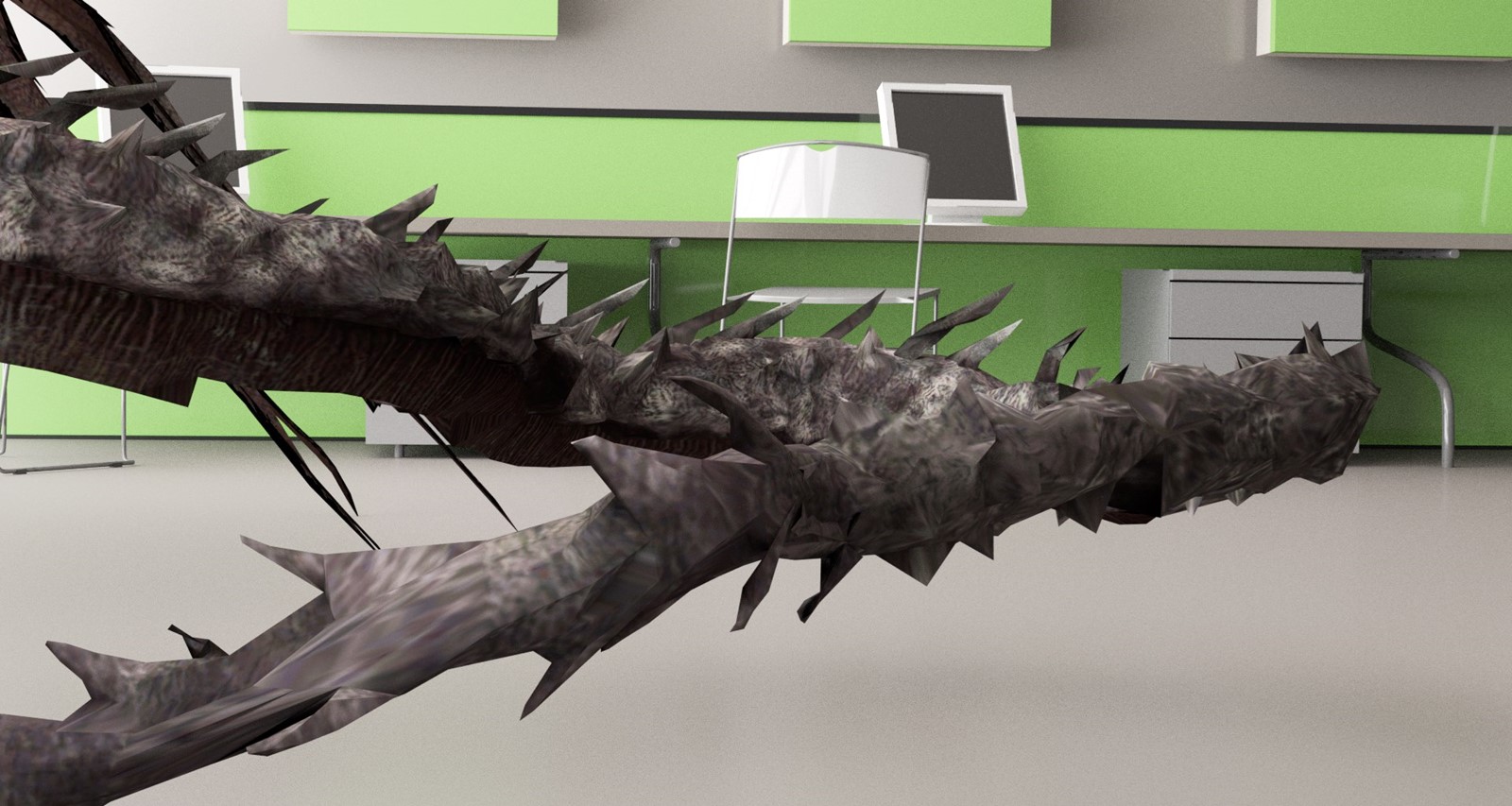
7. Tomasz Kobialka, Goldsmiths, Master of Fine Art, MFA
One of the more interactive works at the exhibition came from Tomasz Kobialka; hardly surprising considering that Kobialka has a professional background in gaming and digital design. He presented a video work, installed in a green-screen space with a low ceiling, lending itself to an immersive experience for the viewer. “Central to my practice is a critical interest in technology,” the artist explains. “I often use the devices of technological progress in order to examine the cultural conditions which contribute to technological production.”
